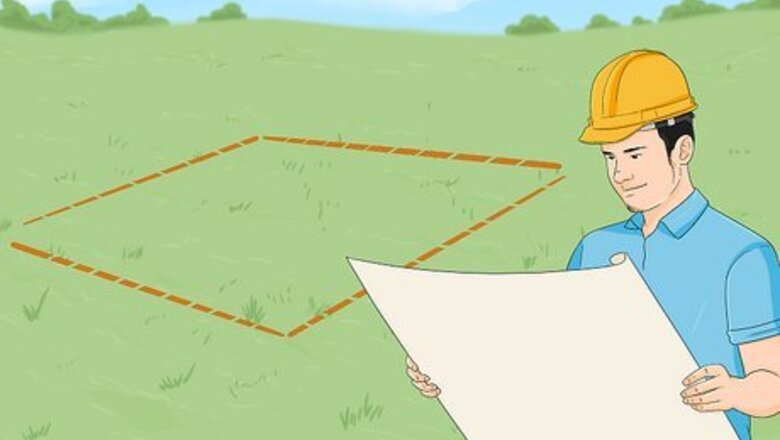
views
Setting up the Pond
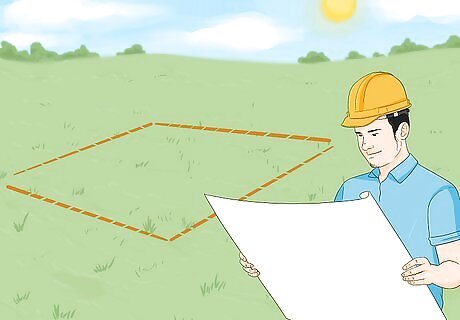
Choose a sunny location with plenty of space. Choose a spot where your pond will get plenty of direct sunlight, as fish need sunlight each day to thrive. Make sure to avoid any areas near pipes, as the pond needs to be at least 2.5 feet (0.76 m) deep, but deeper is always better. You'll also have to install things like a bubbler, extra lights, and a water heater near the pond. Pick an area with plenty of space.
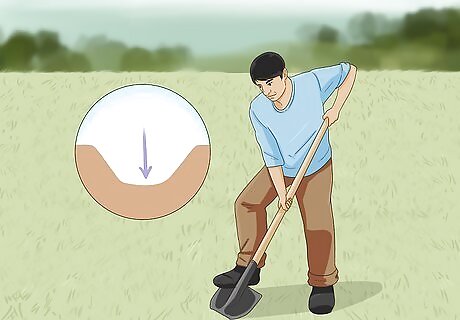
Dig your pond. Use garden or ropes to draw out the outline of your pond on the ground. Use a shovel to dig in 16 inches (41 cm) intervals until you get the depth you need. Dig a little deeper near the center of the pond, as you'll install a water fountain here. Unless you have extensive experience in these kinds of projects, it's a good idea to hire a landscaper or at least consult with one first. The precise size of your pond depends on the number of fish you're farming. As you're farming tilapia to maturity, however, larger is generally better. Build as big of a pond as you can. It can also help to consult with an existing tilapia farmer.
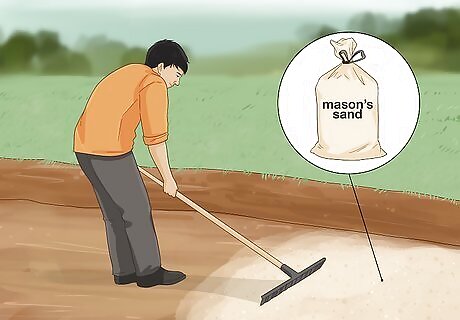
Add sand. Buy mason's sand online or at a local department store. Fill the bottom of your pond with the sand and then use a rake to smooth it out.

Add your pond liner. You can pick up a pond liner, which is essentially a large tarp, at a department store. Get enough liner to cover your entire pond. Place the liner in the center of the pond and then unfold it outwards until your pond is covered.
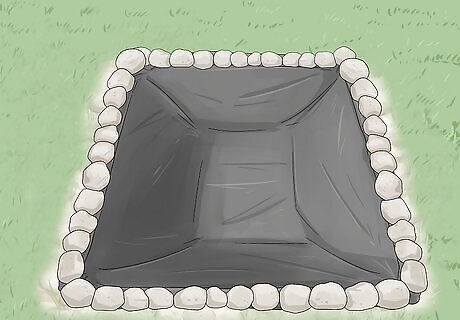
Cover the liner in stones. While you can use stones from your backyard, it's best to purchase stones at a hardware store or online so you can ensure you won't potentially contaminate your water later. Place the stones on the floor or your pond and them move them up the sides and onto the edges. This will keep your liner in place.
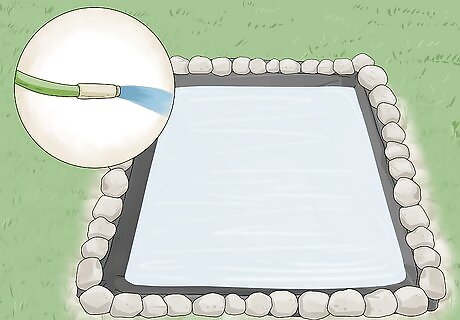
Fill the pond with clean water. Only fill your pond with the same water you would drink yourself. Tap water from your sink, for example, would be fine. You may have to hook your hose up to the main water source from your home and then fill the pond almost to the brim using your hose. You can leave a little headspace on top, as the water will rise when you add your fish. One to two feet (.3 to .6 meters) should be adequate.
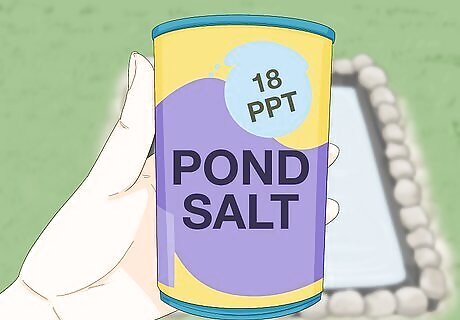
Adjust the salt. You can buy a salt tester at a local hardware store, which is usually a stick dipped into the water to measure the salt. Salt should be around 18 parts per thousand (PPT). Tap water usually requires extra salt. You can buy salts, specifically meant to be used in water, at a hardware store or online, and add them to your water.
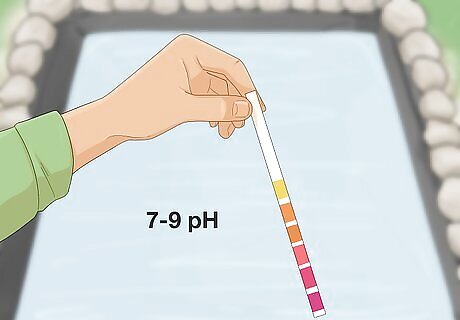
Adjust the pH. You can buy pH testing kits online or at a department store. Instructions vary, but you usually dip a stick or something similar into the water to test to pH levels. For tilapia, the pH should be between 7 and 9. You can add alkaline or acidic products, which you purchase at a hardware store, to your mix into the water to raise or lower the pH.
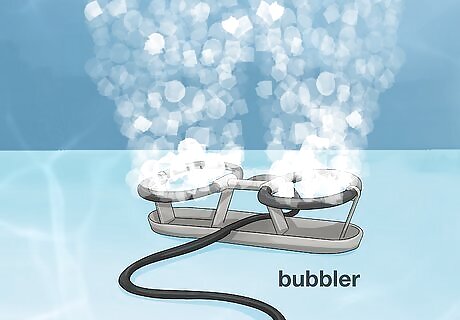
Add a fountain or bubbler. Proper aeration is key for your tilapias' health. Have a landscaper install a fountain or bubbler in the center of your pond to keep the water aerated. Unless you have professional landscaping experience, do not attempt to install a bubbler or fountain yourself. The fountain/bubbler is generally installed after the water is added.

Protect the pond with a fence and net. Birds and some mammals feed on tilapia. Keep a small fence around the pond and keep a net over the pond. This should minimize your fish's exposure to predators.
Raising Your Tilapia

Fertilize the pond before adding your fish. About a week before buying your fish, add a commercial fertilizer to your tank. Look for a fertilizer designed for water, as this will grow algae. Usually, you release a specific amount of the fertilizer into your pond. Follow package instructions, as application methods do vary.
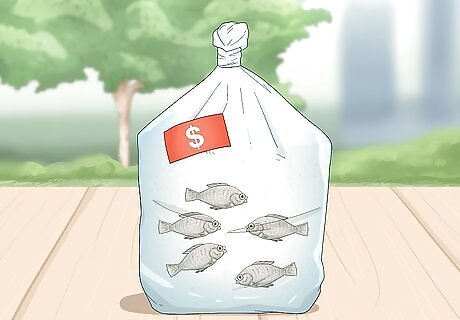
Get your fish from a safe source. It's best to buy tilapia from a breeder who's been farming tilapia for a while. Go for younger fish or fish that have just hatched. It's always a good idea to meet with a breeder in person and check to make sure they have a large pond with a bubbler or fountain. Buying fish online is not a good idea, as you don't want to get fish that could potentially spread disease in your pond.
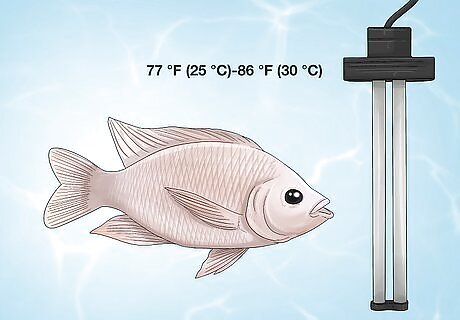
Maintain your pond's temperature. Depending on your region, you may need to install a heating system in your pond. Your pond should remain between 77 °F (25 °C) and 86 °F (30 °C). You can use a thermometer to monitor temperature and turn your heat up or down as needed. Have a professional install a heating system in your pond unless you have extensive experience with landscaping. You can injure yourself installing a heating system and, if you install one improperly, it can affect the health of your fish.
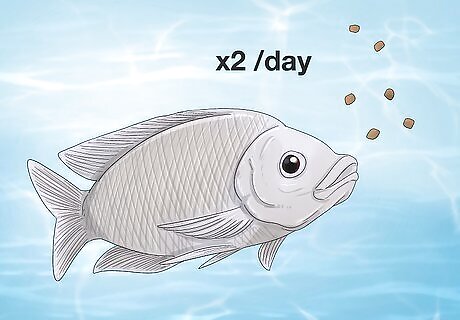
Feed your tilapia twice per day. Tilapia are simple to feed. They will feed on algae in the pond, so keep adding fertilizer to encourage algae growth. In addition to algae, go with a commercial fish food specifically designed for tilapia. Fish should be fed twice a day: once in the morning and once in the afternoon. You can also supplement the diet with things like rice and breadcrumbs on occasion. The amount you feed depends on how many fish you have. The feed you choose should come with a recommendation for serving size.
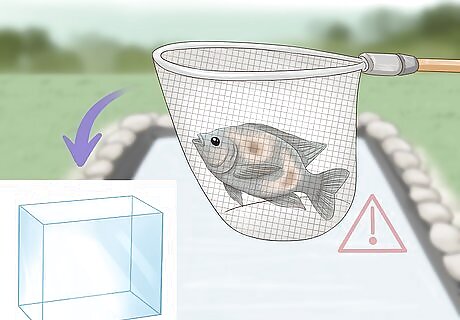
Quarantine sick fish immediately. If a fish seems lethargic or is showing physical signs of illness, like rashes or missing scales, use a net to remove it from the tank immediately. Keep it in a bucket or aquarium until you can diagnose and properly treat the illness. Consult an aquarium professional for advice if a fish gets sick. Some illnesses will clear up with medication.
Harvesting Your Fish
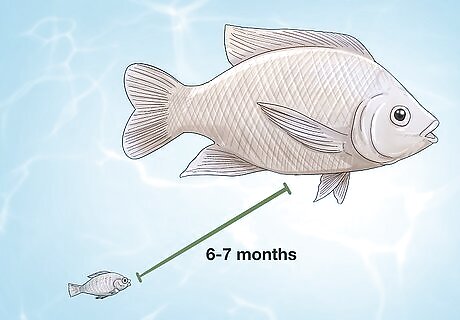
Wait six to seven months to harvest your fish. Tilapia takes about six or seven months to fully mature. Give your tilapia this much time to grow before harvesting. The best fish to harvest will be very large and meaty.
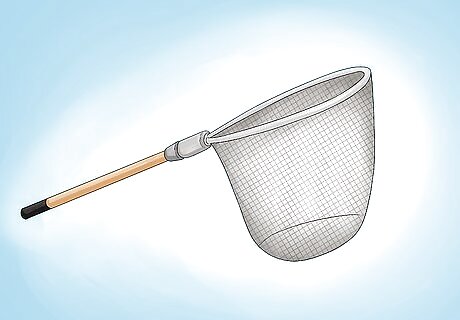
Use a net to remove mature tilapia. The easiest way to remove tilapia from a pond is using a net. Simply pick up a net at a hardware store and scoop out the most mature fish. Some tilapia may run from the net, so it can take some time to remove them from the pond.
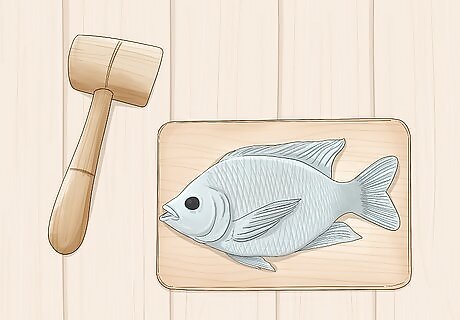
Kill the tilapia immediately. Once removed from the pond, it's humane to kill the tilapia right away to avoid prolonging the struggle. Use a blunt instrument to administer a forceful blow to the head just above the eyes. If this does not kill the fish immediately, administer another blow. If you're harvesting multiple tilapia, store dead fish in a cooler while you complete the harvesting process.

Scale your fish. Work on a flat surface. Run the backside of the knife along your fish from the head to the tail. Keep making long strokes with your knife until all the scales are removed. Flip the fish over and repeat on the other side.
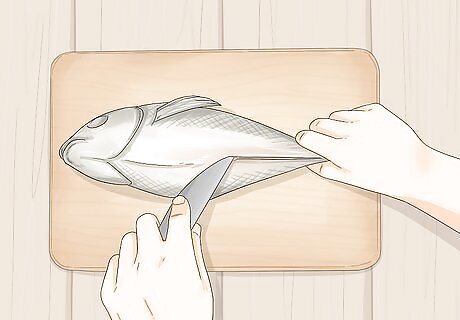
Gut the fish. Place the fish on a cutting board and make a cut from the tip of the belly to the head. Open up the body and remove any entrails. Cut out a v-shape around the fish's anus to remove it. Scrape out any bones with a knife. Then, rinse the inside of the fish with clean tap water. If you want, you can remove and discard the head. When cutting the fish, keep your cut shallow to avoid puncturing the intestines.
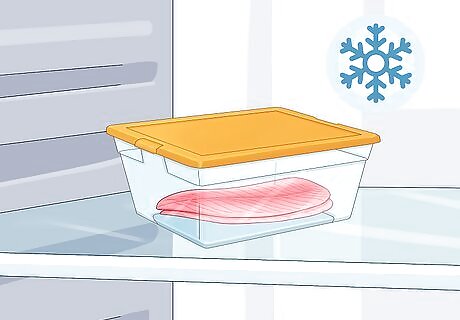
Store your fish in the fridge or freezer. Fish can be stored in the refrigerator when wrapped in plastic and stored in an airtight container. Store them in the fridge if you intend to use them within two days. If you're not going to use your tilapia immediately, wrap it tightly in plastic or foil and store it in the freezer. Tilapia lasts for six to nine months in the freezer.


















Comments
0 comment